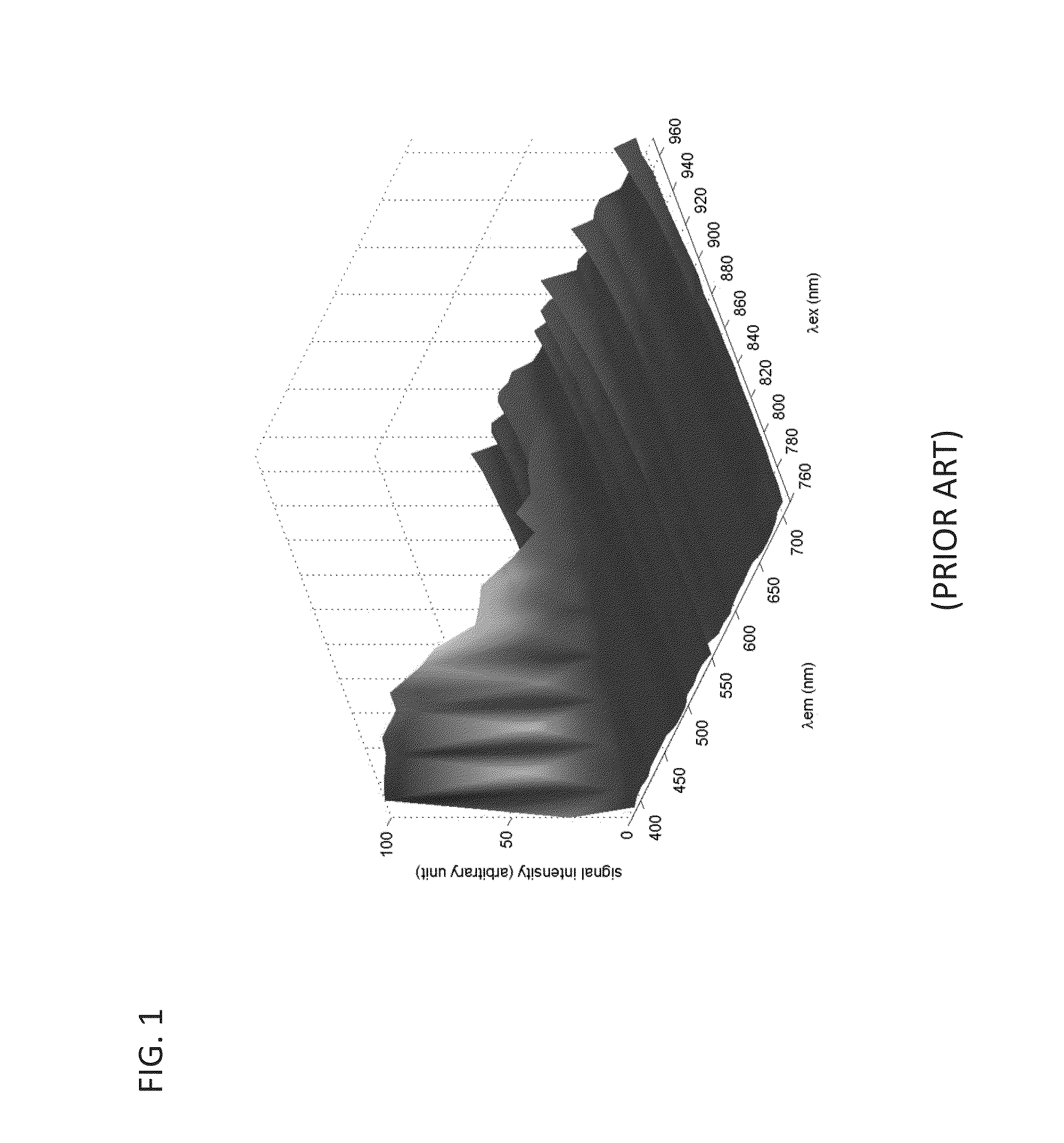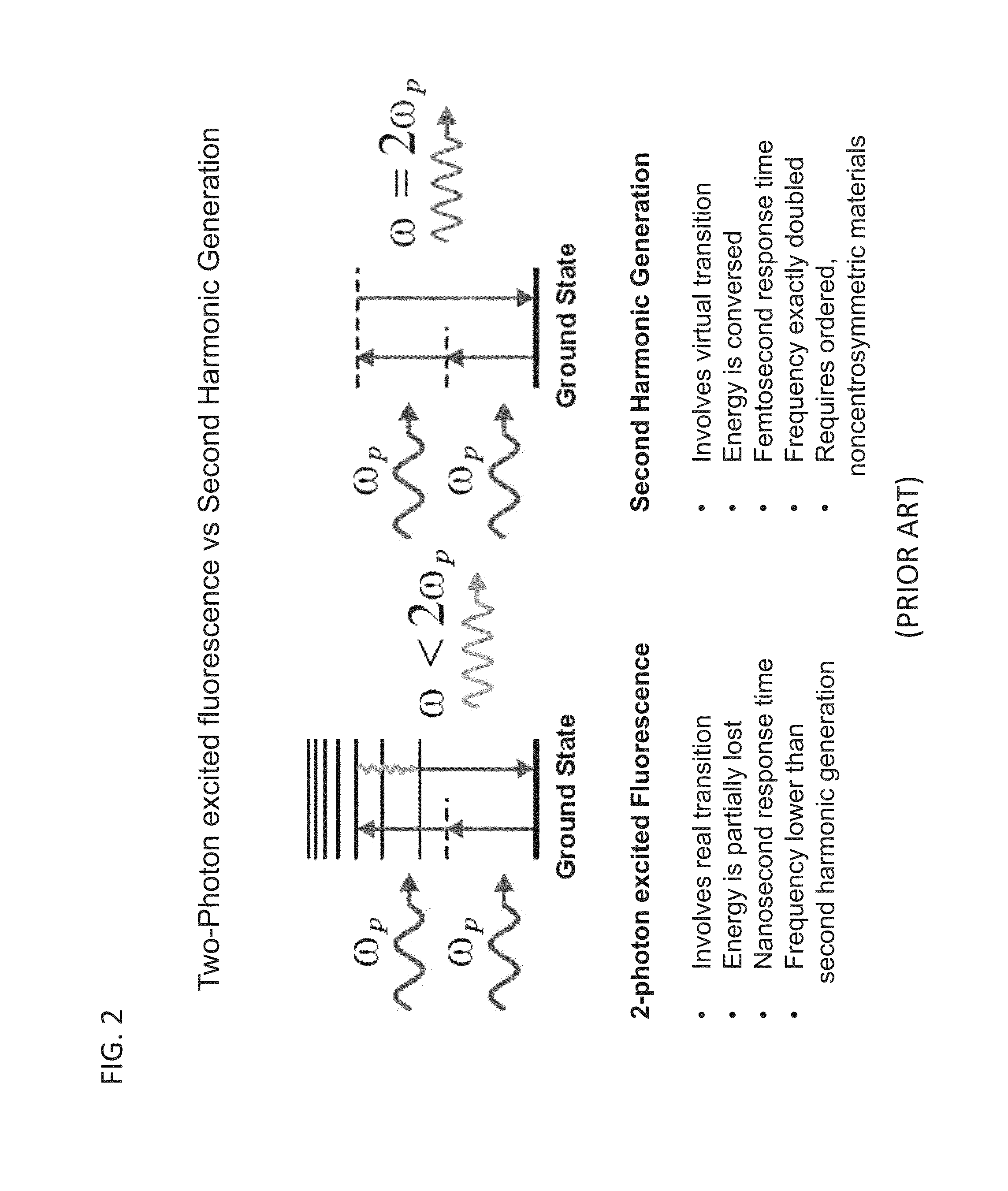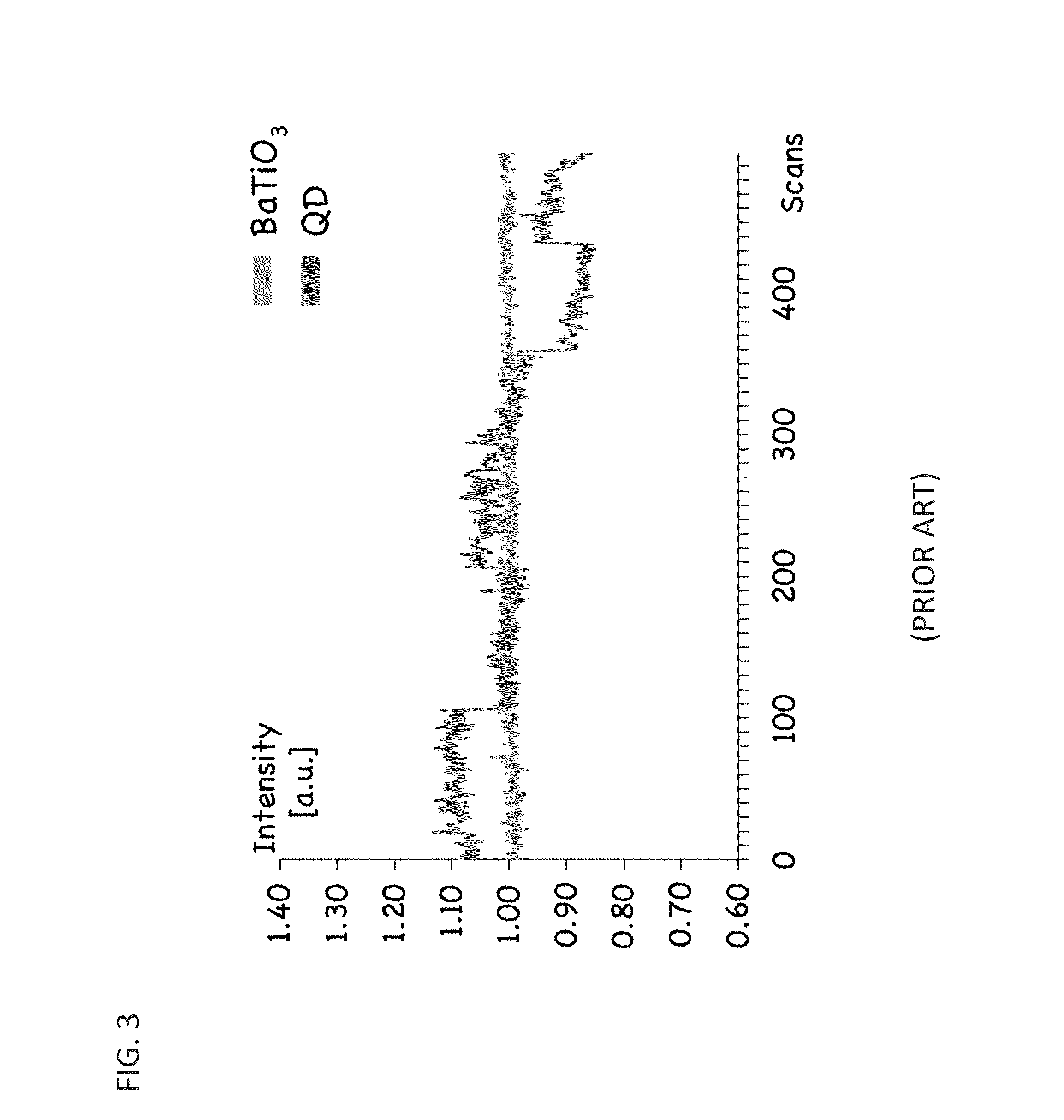Functionalization of and use of functionalized second harmonic generating nanoprobes
a technology of functionalized nanoprobes and nano-probes, which is applied in the field of functionalized shg nanoprobes, can solve the problems of high cost of techniques, impede widespread use, and the ultimate need of characterizing biological targets is largely unm
- Summary
- Abstract
- Description
- Claims
- Application Information
AI Technical Summary
Benefits of technology
Problems solved by technology
Method used
Image
Examples
example 1
Functionalization of BaTiO3
[0111]In one exemplary embodiment, BaTiO3 was functionalized in accordance with the functionalization method described above. The specific chemical schematic used in this example is shown in FIG. 6, and described in detail below.
Materials and Methods
[0112]Chemicals were obtained from the following sources and used without further purification: barium titanate (BaTiO3, Nanostructured & Amorphous Materials, Inc., 99.9%, 200 nm), N-aminoethyl-2,2,4-trimethyl-1-aza-2-silacyclopentane (Gelest), hydrogen peroxide solution (Alrich, 30%, aq), anhydrous toluene (Aldrich), 6-azidohexanoic acid, biotin-cyclooctyne, Alexa Fluor 488 conjugated streptavidin (Invitrogen, 2 mg / mL), anhydrous dichloromethane (DCM, Aldrich, 99.8%), 1-ethyl-3-(3-dimethylaminopropyl)carbodiimide (EDC, Thermo Scientific), Nhydroxysuccinimide (NHS, Thermo Scientific), methoxy-Poly(Ethylene Glycol)-succinimidyl carboxymethyl (mPEG2k-SCM, Laysan Bio, MW 2,000), acetone 5-(succinimidyloxycarbonyl...
example 2
Zebrafish Imaging
[0126]In this exemplary embodiment, a protocol for the preparation and use of a particular SHG nanoprobe label, barium titanate (BaTiO3 or BT), for in vivo imaging in living zebrafish embryos was performed. Chemical treatment of the BaTiO3 nanoparticles results in surface coating with amine-terminal groups, which act as a platform for a variety of chemical modifications for biological applications. Here cross-linking of BaTiO3 to a biotin-linked moiety is described using click chemistry methods and coating of BaTiO3 with nonreactive poly(ethylene glycol) (PEG). Details for injecting PEG-coated SHG nanoprobes into zygote-stage zebrafish embryos, and in vivo imaging of SHG nanoprobes during gastrulation and segmentation are also provided.
Methods and Materials
[0127]To prepare a 300× Danieau stock solution (which should be diluted to 30× in water before using with embryos), add 34.8 ml of 5 M NaCl, 2.1 ml of 1 M KCl, 1.2 ml of 1 M MgSO4, 1.8 ml of 1 M Ca(NO3)2 and 15 ml...
example 3
BaTiO3-Biotin Functionalization
[0141]To test for proper functionalization of the barium titanate conjugated to biotin using click chemistry, the BaTiO3-biotin was first bound to Alexa Fluor (AF) 488 dye-linked Streptavidin as mentioned above. Then, using centrifugation, the BaTiO3-biotin and BaTiO3—OH control solutions were washed 5 times with DI H2O to remove any excess AF-488-linked Streptavidin that was not tightly bound (i.e. that was not bound to biotin, which is a high-affinity binding partner of streptavidin). A drop (˜200 μL) of the washed BaTiO3-Biotin conjugated to AF-488-linked Streptavidin was placed in one well of an 8-well coverslip chamber and a drop (˜200 μL) of the washed control BaTiO3—OH solution was placed into a second adjacent well. Crystals that sedimented near the coverslip were imaged at an illumination wavelength of 965 nm. By taking spectral data over a wide wavelength range (421 nm-587 nm), co-localization of Alexa-488 signal could be seen with properly f...
PUM
| Property | Measurement | Unit |
|---|---|---|
| thickness | aaaaa | aaaaa |
| depth | aaaaa | aaaaa |
| thickness | aaaaa | aaaaa |
Abstract
Description
Claims
Application Information
 Login to View More
Login to View More - R&D
- Intellectual Property
- Life Sciences
- Materials
- Tech Scout
- Unparalleled Data Quality
- Higher Quality Content
- 60% Fewer Hallucinations
Browse by: Latest US Patents, China's latest patents, Technical Efficacy Thesaurus, Application Domain, Technology Topic, Popular Technical Reports.
© 2025 PatSnap. All rights reserved.Legal|Privacy policy|Modern Slavery Act Transparency Statement|Sitemap|About US| Contact US: help@patsnap.com



